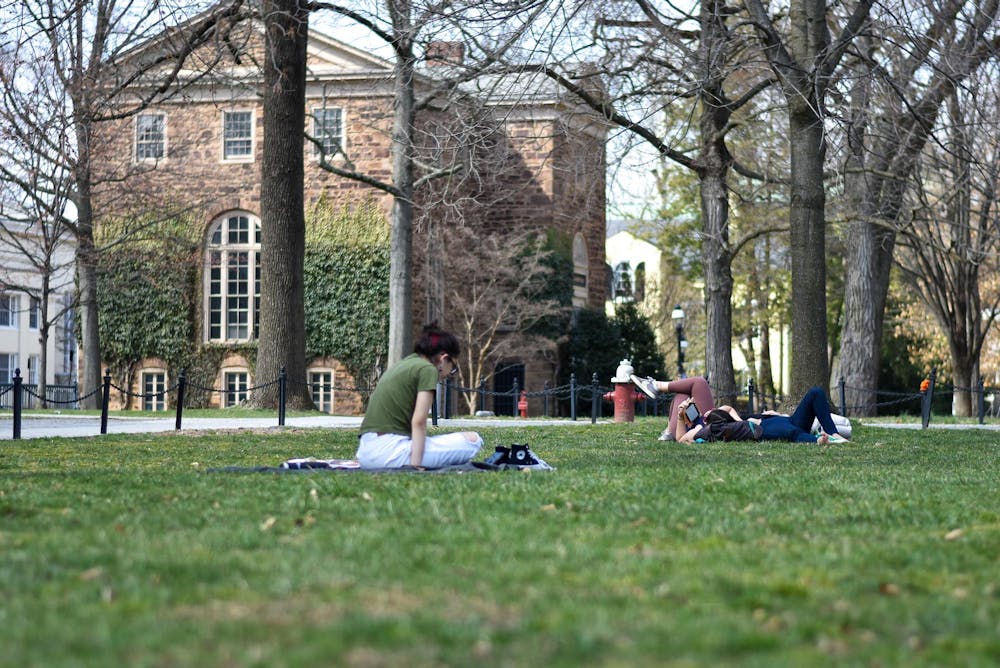Move In Day, Lawnparties, Freshman Orientation, and the First Day of Classes symbolize the start of the fall semester, not only for students, but also for Princeton’s Grounds team. The events’ toll on campus grounds and lawns necessitates maintenance to restore them to their green glory. The Daily Princetonian spoke to the Grounds team to learn more about the strategies and technologies integral in maintaining campus aesthetics.
Robert Staudt, Assistant Director of Campus Grounds, told the ‘Prince’ in an interview that the setup and takedown of major events requires the construction of tents, the arranging of chairs and tables, the insertion of rods into the ground, and vehicles driving over the lawn.
“That creates a lot more damage,” Staudt said, pointing out the ruts created by tires driving over the grass as a major source of lawn degradation.
Staudt also noted that the foot traffic that comes with these events causes damage. Every year, 3,000 to 4,000 people attend Princeton Lawnparties alone, damaging McCosh Courtyard, Frist North Lawn, and other high-traffic lawns on campus.
Move-in brings a slew of vehicles to campus as well.
“One car a day isn’t bad. It’s when it’s for [the] duration, it gets difficult,” Staudt said. “The cars did trample [the grass] because it was dry.”
Staud noted that Move In Day takes place at a time when the grass is particularly dry.
The area around Princeton is experiencing drought-like conditions after an “especially dry summer,” according to Staudt.
“It’s really the drought we’re trying to combat and get that grass to come back.”
To combat the dryness, Grounds’s main concern is irrigation. The Grounds team is introducing new technologies for irrigation — namely, adding additional hose bibbs that help expedite maintenance on campus. According to Staudt, hose bibbs allow for “water when we need it,” dispensing water for the ground only when necessary.
Staudt also said aerators, which “punch little holes in the ground,” allowing water and oxygen to get in.
Even before the fall semester events, the Grounds team worked all summer to recover from University events — namely Graduation and Reunions, which brought roughly 25,000 guests to Princeton’s campus — at the end of the spring semester.

“[Grounds does] a lot of overseeding, a lot of trying to get that lawn established back right after reunions and commencement activities. We’ll try and get the lawn and back and go through summer healthy and get ready for fall,” Staudt said.
As soon as the Grounds team gets the lawns reseeded and their annual fall cleanup finished, they complete this season’s planting, prioritizing asters, reblooming perennials, and flowers in fall colors among the evergreen textures that are a staple of Princeton landscaping.
Looking ahead to the winter, the Grounds team is preparing for inclement weather and prioritizing safety.
“We’ll get all our equipment ready for the snow. When it snows, we’ll have to be here 24/7 to get the campus back to clean and [as] safe conditions as possible during the winter season.”
Hallie Graham is a staff News writer for the ‘Prince’ from Nashville, Tenn. who typically covers campus facilities.
Mary Balid is a News contributor for the ‘Prince.’
Please send any corrections to corrections[at]dailyprincetonian.com.








